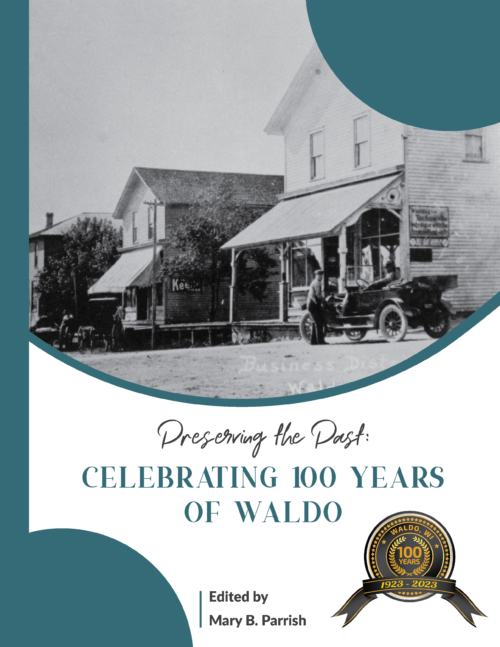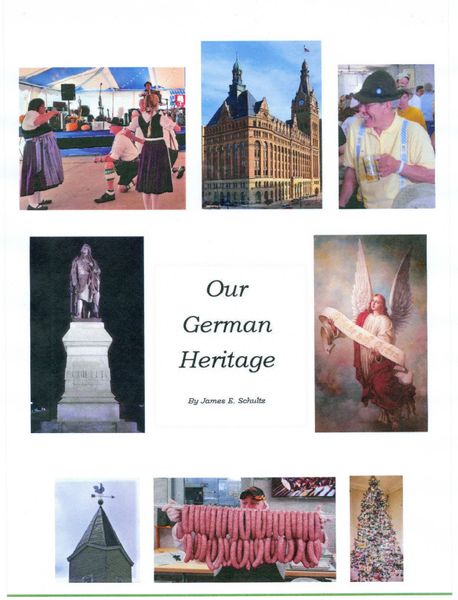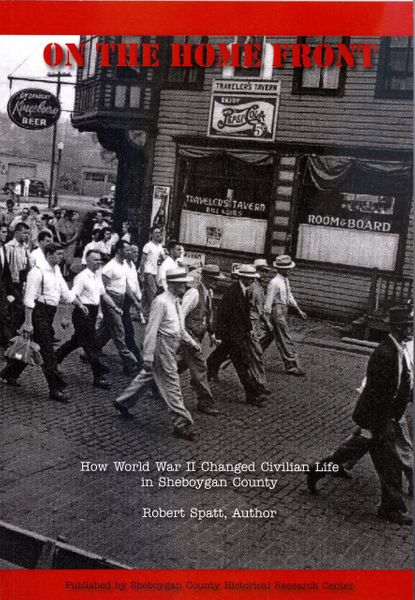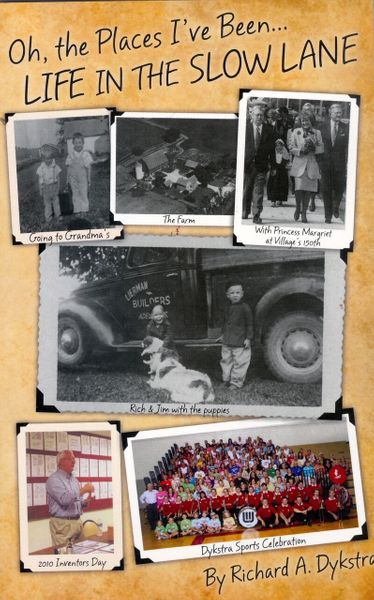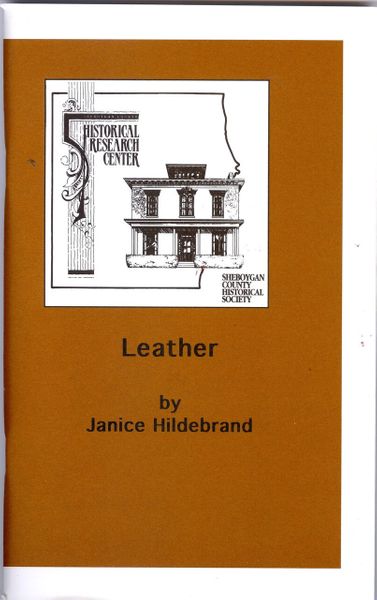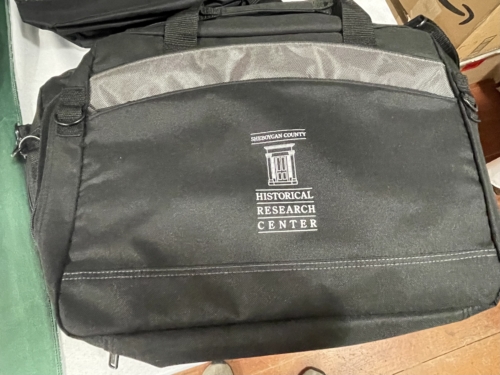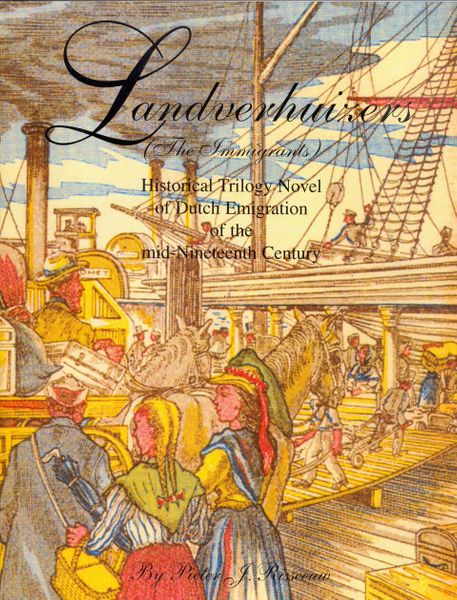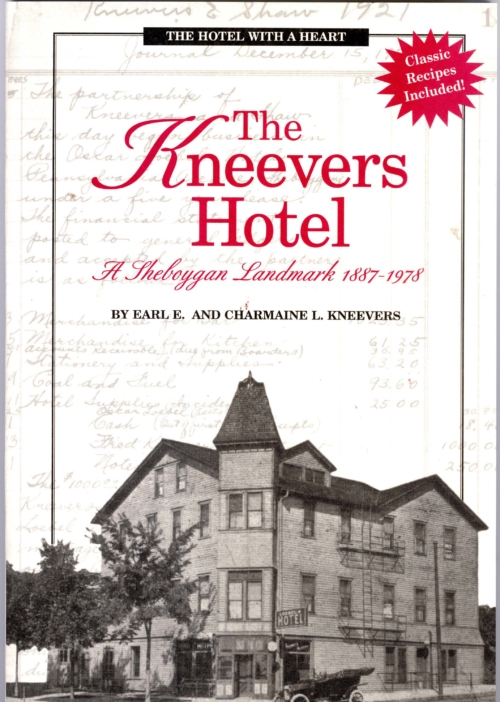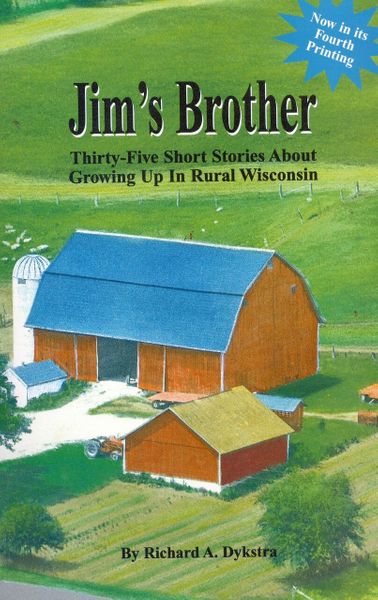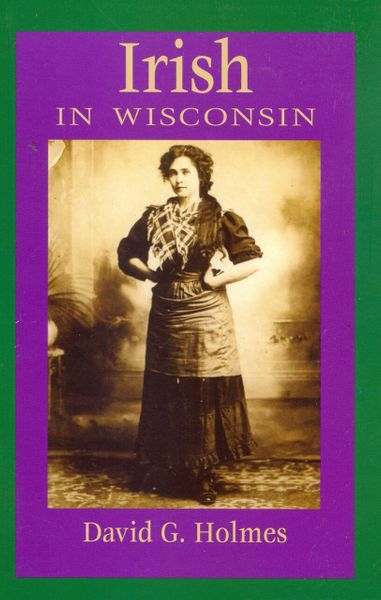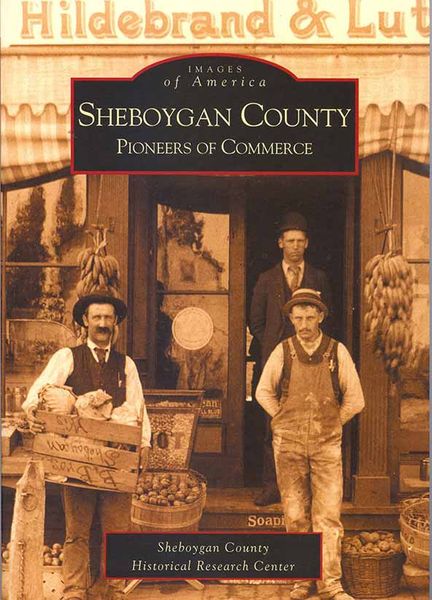-
Sale!The Random Local History Reader is filled with odd and interesting history. What is the real story of the Dead Horse? Who was the Black Terror of Sheboygan? Have you ever read an obituary for an outhouse? Learn the meaning of the term, Yeggman. Find out why Cupid was baffled. And read the full story behind the murder of revered, early teacher, John Sexton. Great reading for quiet time, you’ll enjoy every story and photo included in this random collection of historical gems.
-
Sale!By Robert Matzner Sheboygan resident, Robert Matzner, had a very important story to tell. Friend, Larry Vogel, helped him to put pen to paper. The result is Prisoner 19053, the true story of Matzner’s three years in Nazi concentration camps. Matzner, a native of Poland, lost most of his family to the Nazi’s Final Solution. He somehow survived the horror and came to the United States and Sheboygan with his family in 1949. Robert and Larry have written a remarkable document, a story full of sadness and hope which will touch all readers. The introduction, written by Robert’s son, Murray, is a poignant tribute and a great beginning to Prisoner 19053.
-
By Bernard Michaels A story of the settlement of the northern Kettle Moraine in Sheboygan County, Wisconsin focusing on the town of Mitchell.
-
By Oostburg Historical Society Hundreds of photos of the village of Oostburg. Designed as a companion book to Oostburg, Haven of Hope.
-
By John Textor This is the story of the November 1847 sinking of the propeller ship, Phoenix, from a new perspective. Most of the fatalities were of new Dutch immigrants and this book tells of how life might have been different had the catastrophe not happened.
-
Sale!By Reverend Peter Pernin Rev. Pernin was the parish priest for Peshtigo and nearby Marinette, whose churches burned to the ground. He published his ac-count of the fire in 1874. The late William Converse Haygood served as editor of the Wisconsin Magazine of History from 1957 to 1975. He prepared this version of Father Pernin's account on the occasion of the Peshtigo Fire's centennial in 1971.
-
Sale!By Scott Knickelbine On the night of October 8, 1871, a whirlwind of fire swept through northeastern Wisconsin, destroying the bustling frontier town of Peshtigo. Trees, buildings, and people burst into flames. Metal melted. Sand turned into glass. People thought the end of the world had come. When the "tornado of fire" was over, 2,500 people were dead, and Peshtigo was nothing but a smoking ruin. It was the deadliest wildfire in U.S. history. Kids’ book.
-
By James E. Schultz. More than a history about Schultz's great grandparents, this book features:
- threads of our German heritage, including food, wine and beer, language, religion, music, dance, and customs woven into the family history and indexed;
- sections devoted to “Why they came”, “Today’s German Attitudes”, and “People and Places”;
- a “Special Find” for each of the eight featured ancestors, a genealogical gem that I uncovered;
- a wide variety of church, government, military, personal, and other resources, with a list of 40 resources cataloged as an appendix; and,
- a section called “Challenges, Tips, and Surprises” that provides helpful pointers for finding information.
-
Sale!By Arthur G. Kroos, Jr This is the story of one Sheboygan County soldier, Arthur G. Kroos, Jr., from his enlistment in Company F, 127th Regiment, 32nd Division in the fall of 1940, until release in 1945. Mr. Kroos was chosen to serve a stint as Aide-de-Camp to General Matthew Ridgway. He was trained as a paratrooper seeing service in Northern Ireland, North Africa, Sicily, Italy and on D-Day in France. His final military foray took place in a glider as part of Operation Market-Garden. He was shot down over the Dutch island of Schouwen and spent eight months as a POW at Luft Stalag 1 in Barth, Germany. This book contains his own diary from Luft Stalag 1 and entries from a scrapbook created by his wife, Patty. This is not your average WWII story. It is local history at its best.
-
By Robert Spatt On the Home Front is a chronological account of daily life for Sheboygan residents and how it changed dramatically during WWII. The story is told by way of actual headlines, story excerpts, photographs, editorials and advertisements as published in Sheboygan County newspapers at that time.
-
By Rich Dykstra Rich is back with another series of short stories about life in the 1950s and 1960s. Life in the Slow Lane deals with seemingly mundane but very memorable activities that Dykstra participated in as a child – shopping trips to Sheboygan when it took a week or more of planning, going to the outhouse, Friday nights in Sheboygan Falls capped off with a stop at Bob’s Lunch, a one-room school fair, Sundays at Grandma’s, the anxious anticipation of a first Milwaukee Braves game, life in the era of polio and something called Sunday Rules.
-
By Florence Fenner Popp Mohrsville was a small settlement located at the intersection of the Green Bay and Howards Roads in the town of Herman approximately 2 miles north of Sheboygan Falls. In the early 1900s Highway 32 was known as the Green Bay Road, and later for some time, it was Highway 42. Until World War II, County O was known as the Howards Road. Mohrsville consisted of: Starlight School, Mohnsam’s, the old cheese factory where Carol and Manny Zunker lived and Zunker’s garage. It was named for Paul Mohr who formerly owned a tavern there
-
By Millersville Historical Research Group
The history of the area dates back to 1846 when the first immigrants found their way along the Pigeon River and settled in the area. At first the two settlements were known as Howards and Mueller Villa, later becoming Howards Grove and Millersville.
But in 1967, the two communities incorporated as Howards Grove-Millersville, becoming Sheboygan County’s 10th village, the fourth largest. It also brought the village fame with its cumbersome 24-letter title, the longest in the state. Eventually, the city dropped Millersville and took Howards Grove as its proper name. This book follows the history of just the Millersville portion of the area.
-
Sale!Since 1961, Mayors of Sheboygan have been elected to four-year terms and considered full-time mayors. Prior to 1961, Mayors were considered part-time mayors because the men had other jobs, while also serving as mayor. Starting in 1853, the men who ran for mayor were nominated by local political parties which many times made things interesting. There were times when the man nominated for mayor did not want the job. In the 165 year history of Sheboygan, little has been done to honor the men who served as mayor. This book is an effort to pay tribute to them and accurately, yet simply, document their political tenure. The vignettes that follow are in alphabetical order for ease of organization. Filled with photos this includes biographies of all of the city of Sheboygan’s part-time and full-time mayors.
-
Sale!Though we have nothing as dramatic as Pompeii, Mesa Verde or Petra, we, too, have lost settlements. Our lost settlements like Hoard, New Paris, Bear Lake, Gooseville and Hull’s Crossing are lost places of Sheboygan County- communities that were, for a short time, vibrant and busy, but fell into decline and disappeared except for the occasional mention on an old Sheboygan County map.We’ll take a trip back to reconnect with many of our local mysteries.Available about December 6, 2018.
-
Sale!By Jerry Apps Polio was epidemic in the United States in 1916. By the 1930s, quarantines and school closings were becoming common, as isolation was one of the only ways to fight the disease. The Salk vaccine was not available until 1955; in that year, Wisconsin's Fox River valley had more polio cases per capita than anywhere in the United States. In his most personal book, Jerry Apps, who contracted polio at age 12, reveals how the disease affected him physically and emotionally, profoundly influencing his education, military service, and family life and setting him on the path to becoming a professional writer.
-
By Janice Hildebrand In Sheboygan County there was a lively trade with the Indians for deer hides and other animal skins. Barter with the Indians brought the first traders to the county in the early 1800s. The tanneries of the county were an offshoot of the fur-trading days and were among the first clothing-related businesses to get started in Sheboygan County. Everything from shoes to gloves to harnesses were made of leather. Follow the history of the leather business in the county.
-
Sale!
By Pieter J. Risseeuw
A historical novel, originally published as a trilogy, of Dutch immigration of the mid-nineteenth century. This English translation is made available for the first time by permission of the original publisher and supported by Netherland-America Foundation of New York. Originally published in Dutch in 1947, the novel discusses the trials and tribulations of immigration and the establishment of the Dutch churches and colonies in Iowa and Michigan.
-
By Rick Kroos This autobiography by Rick Kroos takes you from his childhood home in the city of Sheboygan to Vietnam to Hong Kong, where he has lived most of his adult life. It is a wonderful and inspirational story from beginning to end.
-
Sale!By Richard A. Dykstra Here are thirty additional stories about growing up in rural Sheboygan County. Two favorite chapters are “The Airport” and “The Ice Box.” In the first you will appreciate the gullibility of children and in the second you will want to check Dykstra’s nose to see, if like Pinocchio, it has grown a foot or two. Besides the silly and nonsensical stories there are those with a much deeper meaning as in “Revisiting the Gift,” “Three Conversations with Dad” and “Grandma’s Quiet Life.” Dykstra's appreciation of family shines through the pages of all of his books.
-
By Richard A. Dykstra Thirty-five heartwarming stories about growing up in rural Wisconsin during the 1950s and 1960s.
-
Sale!By Fred Zitzer This book documents the Zitzer family's life in Schulz, Russia (also, known as Lugovaya Gryaznukha, Russia). It also details their immigrant trips to the United States. Modern day images of Schulz by Peter and Judy Kaland.
-
Mention the name Prange’s and no matter your age from 40 to 90 you probably have personal memories of the legendary Sheboygan department store. Whether those memories are of the annual animated Christmas window displays and caramel corn, the use of due bills, charge-a-plates, layaways, will-call, the x-ray machine in the shoe department or the escalators, they are shared by many and are part of the cherished collective history of the H.C. Prange Company. This publication is by no means a comprehensive history of the H.C. Prange Company. It is more a trip down memory lane, filled with images, stories and recipes submitted by former employees and loyal shoppers.
-
By David Holmes The Irish have a rich and long history in Wisconsin, dating back to the 19th century. Immigrants quickly formed communities in Beloit, Fond du Lac, and Sturgeon Bay, as well as in rural Trempeauleau County. They worked at day labor, railroad construction, lumbering, fishing, and of course farming. Some of those early Irish communities have disappeared; others have experienced succeeding generations of Irish Americans settling in these Wisconsin cities and small towns and influencing them with their old country charm.
-
Originally platted as the village of Rochester, Sheboygan Falls took shape in the late 1830s and 1840s. Settled by Yankee entrepreneurs from the East, "Sheboygan at the Falls" was a strong settlement from the beginning, surviving even the financial panic of 1837. A city of Greek Revival and Cream City brick architecture, Sheboygan Falls boasts two districts listed on the National Historic Register
-
Sheboygan County's iron-fisted work ethic began with its earliest residents. From the jackknife trading posts and mill wrights of the early 1800s to the spas and "Great Wall of China" of Kohler Company, the importance of commerce to Sheboygan County is evident. This wonderful pictorial history of the small family-owned business of Sheboygan County begins in the 1870s and ends with a great image of a 1950s American Classic-McDonald's Golden Arches.
-
Sale!Situated on the picturesque western shore of Lake Michigan, is a city of contrasts and conundrums. It is a modern city facing all the challenges of today’s world, ready and willing to transition into the future. But, at the same time it is a city comfortable with long-established customs struggling to keep the time-honored traditions which have made it a great place to live. It is a place where people stay on the same bowling teams for decades, where churches are always full and focused on the community and where everybody knows everybody else in the local taverns. Chapters included in this book include: Blazing Trails; The First Fifty Years; Saloons and Public Houses; Railroads Bring Prosperity; Riding the Trolley; Eighth Street- The Heart of Sheboygan; and Parades, Festivals and Events.
-
By Plymouth Historical Society and SCHRC
Plymouth, originally considered a “hub” city because of the hub and wheel factory located there, it has also earned that moniker because of its central location between Milwaukee and Green Bay. Tourists flock to Plymouth year round to visit the variety of shops, to golf, swim and ski, or explore the beautiful Kettle Moraine State Forest. Residents are proud of their heritage, which can be seen at sites throughout the city. Visit Plymouth through this wonderful tribute using historic photographs.



